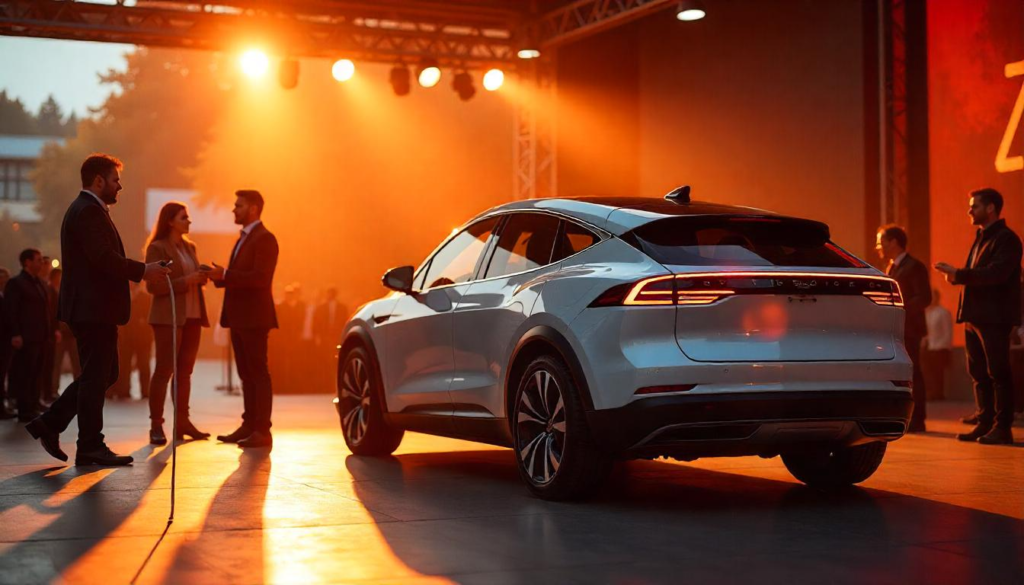Share This Article
Introduction
The Full Self-Driving (FSD) of Tesla has been the centre of attraction in the automotive industry; an emergency of future self-driving automobiles. With this in mind, one has to become cognizant of what all entails the launching of FSD into China. Hence, this article covers the aspects of Bloomberg News in the FSD launch by Tesla in China, its significance and challenges, as well as its more general impacts on the automotive landscape.
Tesla’s Full Self-Driving (FSD) Technology- An Overview
This system is implemented for advanced driver assistance feature, which helps steering a car; without much driving at least required by the operator. Following are some of the advanced features:
- Autonomous navigation. Driving on highways and on city streets, managing intersections, obeying traffic signals.
- Automated Lane changes. Switching seamlessly to adjacent lanes depending on traffic.
- Parking Assistance. Automatic parking available in different scenarios.
Despite the name, it should be added that active travel and the involvement of an operator is still needed and not completely autonomous.
The Chinese Automotive Market: Landscape of Opportunities and Challenges
As the largest automotive market in the world, China is a great opportunity for Tesla FSD. However, entering this market is not without navigating itself through a maze of regulatory frameworks, data security concerns, and heavy competition arising from local manufacturers of electric vehicle (EV).
The Bloomberg Takes on the Tesla FSD Introduction in China

Regulatory Approvals and Challenges
Stated, however, was that following the regulation approvals, the FSD technology would be deployed in China and Europe by the first quarter of 2025. A huge challenge posed by the strong data security regulations by the Chinese government is regarding offshore transfer of data for AI training purposes.
Data Security Concerns
China’s data localization laws state that all data collected in the country must be processed on its territory. This regulation further complicates Tesla’s operations, as usually, company training of the FSD AI algorithms takes place in a geographically distributed setting.
Tesla has been negotiating with the respective Chinese departments and officials to allow data transfer that could be used to improve the FSD system in China.
Competitive Pressure from Domestic EV Makers
In fact, EV makers such as BYD and NIO are fast developing their respective technology regarding autonomous driving. Bloomberg points out that these firms have incorporated sophisticated driver-assistance features, thereby stiffening competition against Tesla. To hold its market standing, Tesla should not only release FSD but should also be ahead in performance compared to its local rivals.
Strategic Implications of the FSD Launch

Enhancing the Market Position of Tesla in China
This might be a potential booster for the public in China to purchase the products of Tesla when it comes to technology-savvy individuals desiring avant-garde car technology. Successful implementation of this project could lead to higher sales and more grip within the Chinese market.
Maneuvering through the Geopolitical and Trade Scenario
The FSD launch gets more complicated under U.S.-China trade tensions. As Bloomberg alluded, the FSD approval could serve as a bargaining chip for Chinese authorities concerning trade negotiations, resulting in an extended period before the launch occurs. This relationship between the U.S. leadership to Tesla makes some of these dynamics harder to navigate in dealing with the geopolitics.
Local Data Houses and Privacy Concerns
As a sign of compliance with local data localization laws in China, Tesla has promised to build local data centers and make sure that processes of storing and using data do not go against state rules. Such measures can help in building trust with the consumers as well as regulators, demonstrating that Tesla respects consumers’ and regulators’ interests in data privacy and security.
Possible Challenges and Risks
Regulatory Hurdles
For the next step, Tesla must pass rather stringent safety as well as protection-with regard to data safety-requirements by Chinese authorities, as that will swallow approvals by said authorities. Otherwise, a step back may be to a delay, or no approval at all, that will push a new market process for Tesla even further behind.
Technological Adaptation
Along the lines of unique conditions of the roads and behaviors of drivers in the nation, technologies in FSD should be tailored locally by Tesla. This adaptation requires much testing and refinement to make it safe and reliable.
Competitive Market Dynamics
With Chinese EV manufacturers racing to develop their autonomous driving technologies, stiff competition is likely for Tesla. It will need to continuously innovate and probably consider collaboration and partnerships within the ecosystem in China to differentiate itself from competitors.
Conclusion
Tesla’s Full Self-Driving systems being introduced in China is strategic in grabbing a larger share of the world’s largest automotive market. Bloomberg describes some of the multifaceted challenges Tesla is facing from regulation approval, data security, and competition with local costs. It also indicates how complex these issues will be as Tesla tries to innovate while adhering to the new rules in the still-evolving structure of autonomous vehicles.


